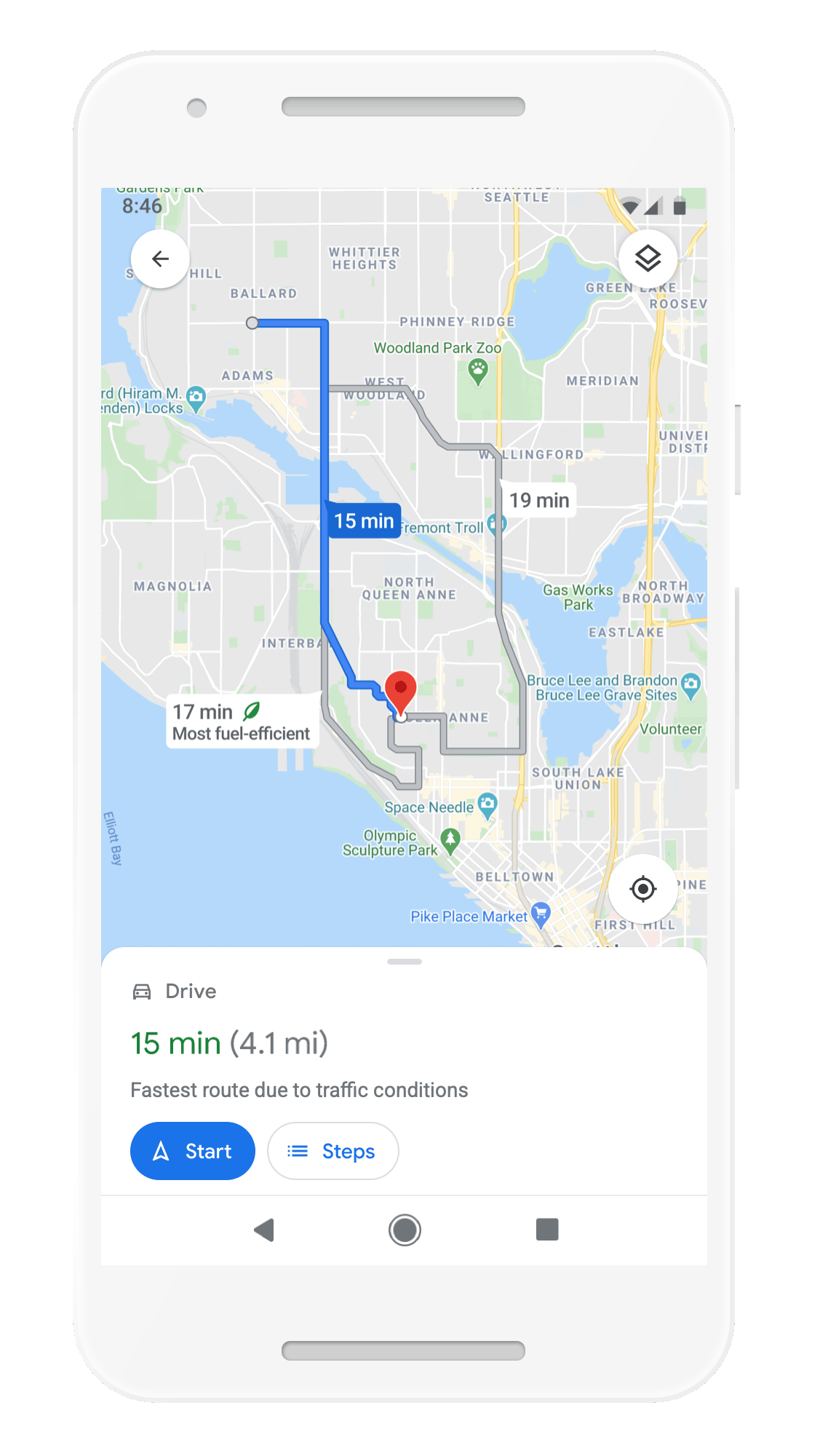Google maps to offer "eco-friendly" navigation options
Google Maps is introducing new features to make it easier for drivers to choose eco-friendly options, the company announced Tuesday. The move is part of the company's stated commitment to reduce humanity's carbon emissions.
"Soon, Google Maps will default to the route with the lowest carbon footprint when it has approximately the same ETA as the fastest route," Dane Glasgow, vice president of product at Google Maps, wrote in a blog post. In cases where choosing an "eco-friendly" route would add travel time, Google Maps will show both options along with the estimated carbon footprint of each.
Google's suggestions will use estimates from the National Renewable Energy Laboratory as well as information on traffic congestion or the known incline of a road to come up with carbon-footprint estimates, Glasgow wrote.
Google will also boost the visibility of public-transit and biking options in Maps, enabling users to view and compare all transportation options to a destination on one screen, rather than having to toggle between choices.
Maps will also alert users of when they are approaching areas that have restricted car emissions. Cities across Europe have recently implemented low-emission zones — areas where the most polluting vehicles are restricted or banned in favor of eco-friendly transportation such as electric cars.
Transportation is the biggest source of carbon emissions in the U.S., so changing drivers' behavior — especially for those who drive the most — could make a dent in that figure, said Elizabeth Irvin, a senior transportation analyst at the Union of Concerned Scientists.
"The amount of fuel and greenhouse gas emissions you'll save is going to really depend on how much driving you're doing. This could be really useful for people doing ride-hailing driving, like Uber, Lyft or delivery drivers," Irvin said.
She pointed to a UPS policy that drivers avoid left turns as an example of a small change that can have a large impact. The policy reduces the time UPS trucks spend in traffic, saving 10 million gallons of fuel and 20,000 tons of carbon dioxide annually, according to the delivery company.
Still, there are limits to the effects that individual choices can have. "The transportation choices people make are influenced by outside investment and policy decisions outside an individual's control," Irvin said. Truly reducing emissions from driving would require large-scale policy to make public transit more accessible and replace gas-burning cars with zero-emissions ones, she said.
Google did not provide an estimate of the emissions savings that could result from the new Maps feature. However, Russell Dicker, a director of product at the company, said that about half of Google Maps' current recommendations have an "eco-friendly" alternative, according to Reuters.
The company last year pledged to reach "carbon-free" operations by 2030 and to nudge its billion users to make more eco-friendly choices. After pressure from its workforce and activist groups like Greenpeace, Google also distanced itself from oil and gas companies last year when it promised it would no longer create custom artificial intelligence tools for fossil-fuel extractors.





